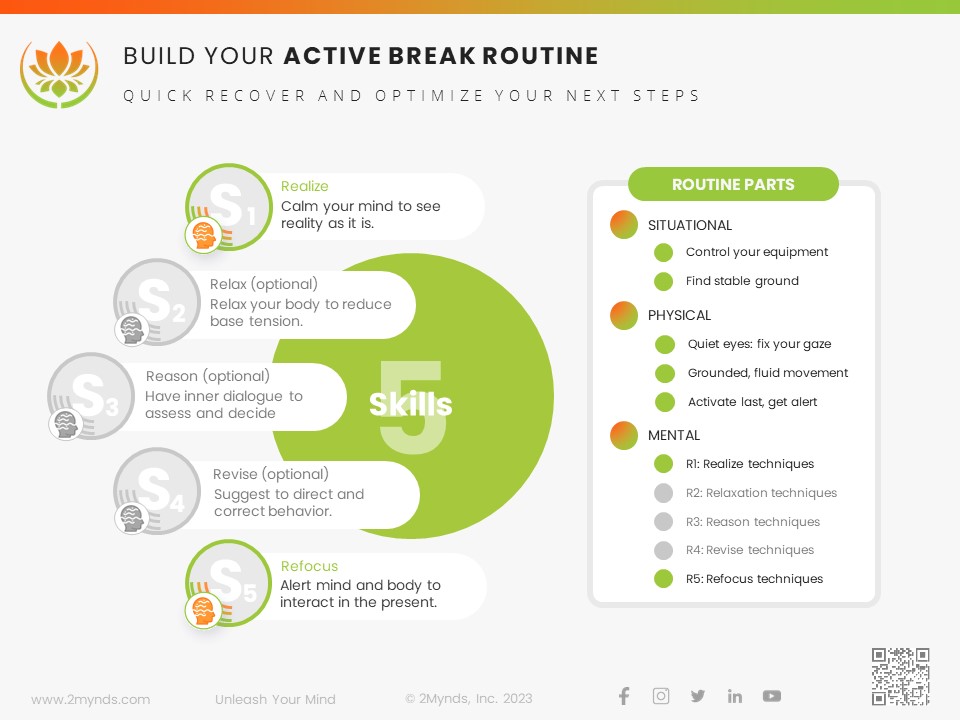I fear not the man who has practiced 10,000 kicks once, but I fear the man who has practiced one kick 10,000 times.
Bruce Lee
Not all habits are created equal
Human beings are creatures of habit. Habits are not limited to humans: virtually every animal on the planet displays some form of habitual behavior. Cats go back to their favorite spots, dogs like specific routes, and even birds have behavioral patterns that have a level of automatism and repetition. This is not surprising, considering that brains prefer storing neural patterns over storing neural signals.
Not all habits are the same, and, for athletes, it’s important to distinguish those that add value to a performance and those that put a performance at risk. Routines are purposeful habits that are controlled and designed to optimize behavior. Although many athletes, including coaches, use the terms routine and ritual interchangeably, a ritual is different from a routine in that it often has a superstitious aspect to it. This brings rituals closer to a more problematic kind of habitual behavior: compulsions. Compulsive behavior is not controlled but controlling. It is often not a self-chosen behavior but triggered by external circumstances. Compulsions, and to some extent rituals, lack the flexibility and purpose that we find in good routines.
The value of routines in sports
Routines are everywhere in sports, and you only have to turn on the television to see professional athletes execute their routines. There are many different types of routines, and in the Flow 255® system of 2Mynds, we distinguish preparation, performance, and recovery routines.
Some athletes have spoken out about their routines. Tiger Woods has more than once described how his father helped him develop a pre-shot routine at an early age. Michael Jordan used a particular sequence of movements before a free throw. Soccer legend Pele was known for doing a visualization routine before matches. Nadal has routines that are borderline rituals, even though he has clarified that he does them by choice and with a level of flexibility. Boris Becker, somewhat famously, had a habitual pattern with his tongue that Andre Agassi used to predict where Becker might serve.
Beyond the fact that many professional athletes attest to the value of routines, there is thorough evidence that routines increase performance. A systematic review and meta-analysis by Rupprecht et al. shows consistently positive impacts of pre-performance routines across different sports, levels, and pressure conditions.
The anatomy of a good routine
A good routine, whether it is before, during, or after a performance, has a particular and consistent anatomy. It has three components: (1) situational, (2) physical, and (3) mental. They are all essential cogs in a routine’s machinery.
The situational part of a routine includes where you choose to do the routine and what you do with materials and tools. The physical component refers to your posture and movement, and the mental component involves the effective application of your mental fitness.
An impactful and efficient routine not only addresses each component but also makes sure that each component reinforces the other. For example, suppose the purpose of a routine is to calm racing emotions and reduce tightness due to perceived pressure (say, during a short break when the ball is not in play in a ball sport). In that case, an athlete’s posture, movement, and use of materials should be calming as well. The most common mistake with routines, however, is the lack of structure and quality in the mental component.
Integrate mental fitness into your routine
The mental component of a routine is the most powerful part. Even if you get the situational and physical aspects right, if your mental skills are poor or not used in your routine, your routine remains empty and will not serve its purpose, in particular under pressure. At 2Mynds, we use the five core mental skills in the Flow 255® system as building blocks for the mental component of routines. The five core skills (realize, relax, reason, revise, refocus) have a specific order that also determines the order of the routine blocks:
- Calm your mind
- Relax your body
- Be smart
- Guide your actions
- Focus and execute
Depending on the routines and situation, one or more components can be skipped, but their order should never change. The 2Mynds Flow 255 system uses routine cards to help athletes build routines from the right building blocks.

Routines need training
If you want routines with impact, you have to make sure that the skills that you apply in the five parts of the mental component are trained. Your routine will be as strong as its weakest link, so each skill deserves attention. While many see the application of routines as training, that is a misconception. Good training is an investment and involves straining your abilities, and due to that, it typically will (and should) reduce performance immediately after the training. Routines have a different purpose: they are meant to reap the benefits of training and get a return on the training “investments.” Hence, immediately after good routines, your performance should increase.
Ready to develop your routines? Our Flow 255 platform not only trains your skills but also provides you with routine cards and playlists that will help you build routines that make an impact!
